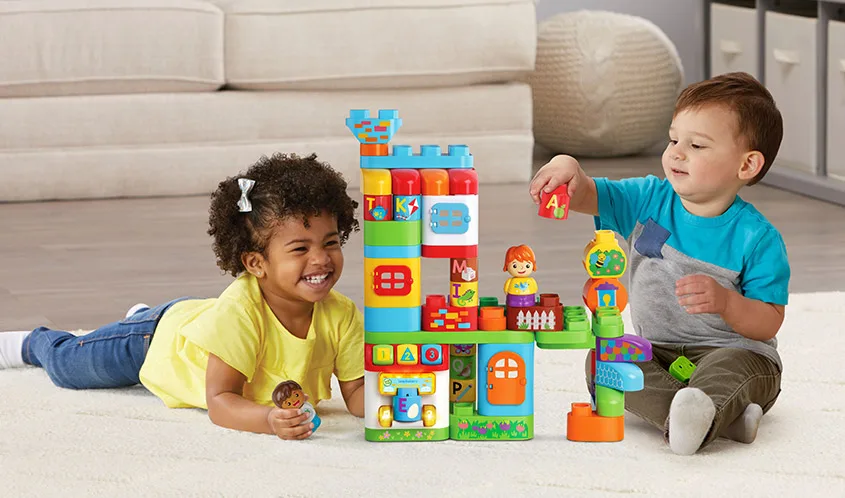The Toy Book chats with Jennifer Eiselein, vice president of marketing and product development for VTech Electronics North America, about LeapFrog’s new LeapBuilders line.
Toy Book: LeapFrog entered the construction aisle for the first time this year with LeapBuilders. What sparked the idea for the new line? What was it like transforming it from an idea into an actual product?
Jennifer Eiselein: We continue to focus on our core LeapFrog infant and preschool categories and tech products for kids, but we also like to look at other categories where we think LeapFrog can make an impact. Building blocks are important tools to unlock children’s creativity, but [construction is] a category that is ripe for innovation. We saw an opportunity to take a unique approach to block play. We injected learning and technology into our introduction of LeapBuilders, our first-ever line of smart building blocks. Our product development team worked closely with our retail partners and analyzed consumer research to customize a product that provides innovative building play while remaining true to the learning content LeapFrog is known for.
TB: How did LeapFrog incorporate technology into the building sets?
JE: The Smart Star cube is what truly brings the LeapBuilders sets to life. When you insert a double-sided learning block into the interactive Smart Star cube, it recognizes the specific block and responds with lights, sounds, and songs. There is also a motion sensor that creates responses as you build on the Smart Star cube. The responses encourage children to keep building and create an engaging, extended, and independent play experience.
TB: How do LeapBuilders products combine classic block play with curriculum-based content?
JE: Each of the LeapBuilders sets includes a number of learning blocks for free play and building, specially designed to be easy for little hands to put together and pull apart. Most sets feature a theme, so when a learning block is inserted into a Smart Star cube, it responds with sounds, educational songs, and phrases related to the theme. For example, the Food Fun Family Farm content centers on animals, fruits, and veggies, and the 123 Fix-It Truck incorporates numbers, counting, and tools. The curriculum-based content in LeapBuilders is meant to complement the skills children learn at home and reinforce early-learning curriculum in a fun, engaging way. Because the sets all work together, kids can get even more unique responses by mixing and matching sets.

TB: How have consumers and retailers responded to the LeapBuilders line so far?
JE: Initial interest has been tremendous! We worked hand in hand with our retail partners to develop a product we thought would resonate with consumers and offer a unique play experience they can’t find with other building toys out there. LeapBuilders is the perfect combination of building, learning, and fun, and we believe we’re offering consumers an innovative new choice for better block play.
TB: What lies ahead for LeapFrog for the rest of the year?
JE: We are really excited to introduce a new spin on handheld gaming: RockIt Twist. It lets kids twist, turn, play, and learn with four sides of play. Colorful light-up controls include buttons, dials, a spinner, a slider switch, and a D-pad, which provide a totally unique way to play exciting games. Preloaded games with renowned LeapFrog learning content help kids learn skills, such as literacy, math, problem-solving, science, and creativity — all while having fun.
We continue to incorporate educational content into our engaging infant and preschool lines as well. Our new Smart Sizzlin’ BBQ Grill, a complement to our popular Scoop & Learn Ice Cream Cart, recognizes the included play food pieces when kids attach them to the rotisserie skewer
and introduces colors and numbers. We also have some great new additions to our Learn & Groove line, such as the Shakin’ Colors Maracas and Dancing Panda, that encourage learning through musical exploration.
We look forward to continuing to develop innovative LeapFrog toys that enrich children’s development and make learning fun.
This article originally appeared in the July/August 2019 issue of the Toy Book.

